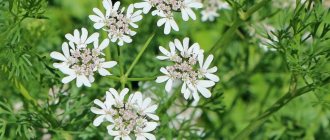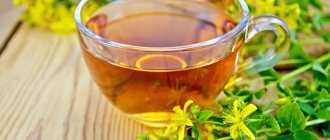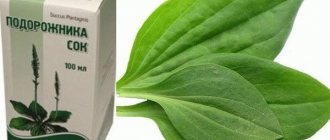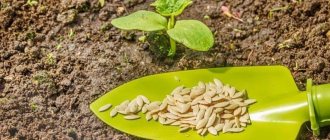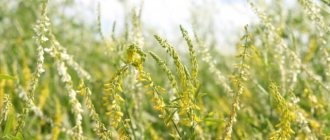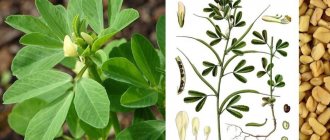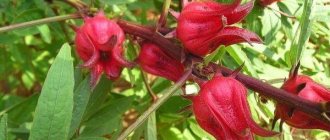How to distinguish coriander from cilantro
Coriander is cilantro, which means they are no different from each other. The first word refers to the seeds, and the second refers to the green plant. However, it should be borne in mind that essentially the same plant should be used in different ways. This is due not only to the difference in the chemical composition of spices, but also to the difference in taste.
Most often, coriander and cilantro are used in cooking, and you can buy them in a regular supermarket, only in different departments. The first one is sold in the department where you can find spices in bags, next to black pepper, cumin, and so on. Cilantro most often lies on the counter next to the greens.
Note! Some believe that coriander is parsley because of its external similarity, but these are completely different plants in taste and chemical composition. Replacing one with the other in recipes can lead to extremely unpleasant consequences - the dish simply won’t work because it won’t have the desired taste
In Asian countries, the described spice is added to almost every dish, giving it a special taste.
Important! In order for coriander to create a pleasant aroma and taste, it is recommended to chop it. However, you should be very careful with the dosage, because if you go too far with the volume, the dish will be hopelessly spoiled
In the Caucasus, this spice is added to almost every type of sauce: adjika, tkemali, satsibeli. Cooking real pilaf, kharcho soup or carrots “Korean style” cannot do without it.
In addition to taste, there are also medical contraindications for consuming cilantro and coriander:
- Firstly, spices are not recommended for consumption by people who have gastritis or stomach ulcers. For them, the acids present in seeds and greens can lead to an exacerbation of the disease, and emergency medical care may even be required;
- Secondly, one of the most common side effects of excessive consumption of these spices is sleep disturbance. Moreover, within reasonable limits, this plant has a relaxing effect on the body and normalizes the functioning of the nervous system. Thus, in order to avoid negative consequences, it is enough to simply consume the plant in moderation;
- Thirdly, the spice changes the taste of breast milk, so it is not recommended to use it while breastfeeding a child and during pregnancy, so as not to cause allergies.
So, coriander and cilantro have many beneficial properties when used wisely. The fresh plant has a large amount of vitamins and microelements and is actively used in the preparation of various dishes. Valuable coriander oil is produced from the seeds, which is used not only in cooking, but also in cosmetology, as it has a positive effect on the skin and hair. Answering the question that many ask: what is the difference between coriander and cilantro, we can conclude that it is nothing. These are the same plant, only the seeds are called coriander, and the stems with leaves are called cilantro.
Indian and Georgian cuisine would not be so distinctive without cilantro or coriander - an aromatic spice that is added to the traditional dishes of these peoples. What is the difference between coriander and cilantro, how is this plant useful, how to use it correctly - let’s look at it in more detail.
Coriander and cilantro are the same thing
Coriander is cilantro, but in the form of fruits formed towards the end of the growing season. Brown grains densely strew the umbrellas of the annual plant and saturate the space with a tart smell. The spice is put with cumin and other seasonings in dishes for spiciness:
- for winter preparations, marinades;
- used for sauces and soups.
In the aroma of five-star cognacs and expensive liqueurs, it is easy to detect the familiar notes of garden crops. What coriander is and what its features are, you can read in the article with a detailed description.
The leaf and grains are used as single-component seasonings and together with other ingredients. Complex compositions add new notes to familiar products and allow for gastronomic pleasure. Adding a few grains to béchamel sauce, parsnip and squash soup, and sprinkling onion pie will greatly improve the flavor. The main thing is to follow the dose and choose the right spices. If you add several different spices with a strong smell together, they will “clog” other herbs. Therefore, cumin, calandra or cardamom are combined with less aromatic herbs.
We also recommend: How to peel a pomegranate?
Procurement and storage of raw materials
Ready-made coriander fruits can be purchased in a store or market.
When choosing a product, you should follow a few simple rules:
- Buy only whole fruits. In ground form, coriander is much more aromatic, however, the seeds must be crushed immediately before use, otherwise many of the most valuable components of the plant quickly evaporate, and the beneficial properties of the raw material are lost. In addition, it is easier to add stabilizers, preservatives and other “chemicals” to powdered spices that are incompatible with the medicinal purposes of using the product.
- Give preference to products packaged in multi-layer foil paper or glass with a hermetically sealed lid.
- Checking the expiration date is a must with any purchase. High-quality raw materials should not be stored for more than six months; if a longer period is indicated on the packaging, this indicates the seller’s dishonesty.
- If you have the opportunity to inspect, smell and taste the seeds, you should take advantage of it. High-quality raw materials must be dry and clean, have a uniform color - brown, yellowish-brown or greenish. Individual seeds should not stick together; there cannot be any inclusions, signs of spoilage, damage or mold on them. Another reason to refuse to purchase is the presence of single black copies in the batch. The aroma of a grain rubbed between your fingers is always bright and persistent; when you bite into the seed, you should feel a pleasant but distinct bitterness.
Did you know? The well-known “dill water” is prepared not from dill, as many people think, but from fennel. An analogue of the product in Germany is tea for babies, to which, in addition to fennel, cumin and coriander are added.
Those who managed to grow cilantro on their own plot can prepare the seeds themselves. They should be collected at the moment when one-third to half of the fruits in the umbrellas have turned brown, and the entire umbrella must be cut off. Immediately after collection, the umbrellas are laid out in a single layer on a paper towel or soft cloth and left in a place protected from direct sunlight but well ventilated to dry completely.
After drying, you can begin threshing (fruit extraction)
Depending on the volume, this can be done manually or using special equipment, however, in any case, it is important to ensure that the integrity of the fruit is not compromised. The amount of essential oil in coriander seeds decreases as they ripen, but for proper use of the raw material, a dosed content of this aromatic substance is necessary.
Another amazing property of cilantro seeds is that, when dried, they develop a deeper aroma during storage. And vice versa: in raw seeds, the essential oil quickly loses its pleasant odor, its constituent components oxidize, and the raw material becomes unsuitable for consumption.
The prepared seeds should be stored in the same way as any spices and medicinal herbs - in glass containers under a tight lid, placed in a dry place protected from light. The shelf life, as already mentioned, is six months.
Did you know? According to one version, the word “coriander” comes from the ancient Greek “κόρις”, that is, “bug”. The young plant, indeed, has a pronounced and unpleasant odor, similar to the miasma emitted by this small bloodsucker.
How cilantro and coriander are used by chefs
Fresh cilantro is an excellent addition to summer vegetable salads. Although it should be noted that it is also dried and used as a spice. But coriander is still much more often used by chefs as a food additive. After all, greens can only be added fresh or dried, and seeds prepared for future use are quite appropriate to store for a certain period of time and add to food if necessary.
Spicy fragrant sprigs of cilantro, added to a meat or fish dish, can completely transform the taste and smell of the dish. A variety of sauces, appetizers and even marinades acquire a unique aroma when dried cilantro is added.
But coriander, the seeds of the plant, is most often used to keep meat fresh longer. For this purpose, a special marinade is prepared with crushed coriander seeds.
Cooks have not forgotten about baking: buns, muffins and other confectionery products become more flavorful when coriander is added when kneading the dough.
Read also: Brazil nuts - benefits and harms, properties for women and contraindications
Even sausages, canned food, cheeses, or rather, some types of them, contain coriander seeds.
But the Germans went even further: they learned to include this spice in the composition of a foamy drink - beer.
Planting and care
Coriander is demanding of light
, when shading, fruit ripening is delayed, yield and essential oil yield are reduced. Growing in shade or even partial shade also produces weak and elongated greenery.
Coriander is moisture-loving
, especially during the first period of growth and during fruit set. When swelling, they consume 130% of water by weight of the dry mass.
High temperatures during the flowering period, combined with low relative air humidity and lack of moisture in the soil, sharply reduce the yield; plants bolt, bypassing the rosette phase.
Very picky about soil
- loves light, sandy loam, rich in nutrients.
Fresh manure delays seed ripening. If the area has poor soil, you should definitely add additional organic matter before sowing. Considering that the root system of coriander is powerful and taprooted, which can go deep up to 1.5 m.
Coriander is damaged by umbrella moths, wireworms, and cutworm caterpillars.
. But at the same time, many insect pests bypass it. That is why it is sown along cabbage, potatoes, carrots, onions and other crops.
When sowing with dry seeds, seedlings appear on the 14-18th day
, and fermented or sprouted - much earlier.
The seeding rate is 1.5-2 g/m2, planting depth is up to 1-1.5 cm.
Care consists of periodic watering and loosening the soil.
Coriander fruits ripen unevenly, first of all on the central umbels. When the seeds turn brown, the umbrellas are cut off and dried in the shade, followed by threshing.
The greens are picked as they grow, then they can either be frozen or dried.
Types of coriander
Every year new hybrids with improved aromatic properties appear. Regardless of the variety, the leaves and seeds have health benefits. “Yantar”, “Karibe F1”, “Luch” are oilseed varieties. They differ:
- a large amount of green mass;
- high content of essential oils;
- late shooting;
- resistance to stemming.
“Debut” grows in the form of a rosette on a leafy stem and matures 1.5 months after planting. To ensure that there is always young greenery on the table, new seeds are scattered into the soil every 15 days.
Read also: Seramis soil: description, composition, ease of use of the substrate
The mid-season species “Stimulus” produces rosettes weighing 45 g and many leaves with a glossy sheen. Lush greenery decorates “Borodinsky”, “Taiga”, “Venus”, “Avant-garde”.
Ancient herb - cilantro and its many names
thousand year old plant
In fact, the plant, which has become our topic of conversation today, has existed on the planet, according to some sources, for more than five thousand years. It is known everywhere and in many countries is revered as one of the healing herbs for our health. And this is not surprising, because cilantro contains minerals, vitamins, essential oils, and acids. Each component provides one benefit or another to our health. Many people have learned from experience that eating plants can have a significant positive effect on the state of the body.
So, cilantro has been on the planet for thousands of years, many peoples know it, so it is not surprising that the plant has many names. Each nationality gave its own:
- kishnishi;
- hamem;
- kinji;
- chilantro;
- calandra.
Greens and seeds
Did this influence the fact that the herb in our country is called both cilantro and coriander and it is generally accepted that they are one and the same thing? No, neither numerous names nor ancient history have anything to do with it. The answer is tritely simple - cilantro is the green mass of the plant, coriander is its seeds. It turns out that this is one plant, only its parts are different. But you still need to call everything by its proper name so that there is no confusion.
Imagine the situation that you gave your recipe to someone, it says that you need to put coriander in the dish, for example, 100 grams. And a person who understands that we are talking about seeds, but has no experience in cooking, will put exactly what is written in the recipe. The dish is ruined.
A much more unpleasant situation is when people unknowingly begin to misuse the herb for treatment. They read somewhere that cilantro is useful, you can make decoctions and infusions. Without advice and knowledge, treatment begins, but there is no result, or it is not what was expected. Of course, because cilantro seeds have some beneficial properties, and leaves have different ones. There can be no mistake here.
It also happens that people plant coriander by mistake, but they categorically do not like cilantro itself. But on the package of seeds it is clearly written - coriander sativum. They sow to get new greens for themselves, to diversify their diet, but in the end the hated grass grows. Who is guilty? A manufacturer who didn't specify that it was cilantro? No, it's all from ignorance.
What are cilantro and coriander valued for?
For a long time, cilantro has been grown in almost every corner of our planet and is valued for its aroma and healing properties. All over the world, this plant is a special seasoning in cooking. But not only culinary specialists were able to appreciate all the qualities of the plant. Perfumers, turning their attention to the extraordinary aroma of this representative of the flora, hastened to find use for it in their industry, adding cilantro to cosmetic products.
Only those seeds that have reached sufficient ripeness have their own unique smell. And those that are completely immature smell absolutely wrong: their smell is even somewhat unpleasant.
The cilantro in the photo to the right is a green annual herb plant of the Apiaceae family, with bare, branched stems. The smell of this plant, as we said above, is one of the most fragrant smells on the planet.
What kind of plant is this
Coriander is a herbaceous annual that belongs to the Apiaceae family. The name comes from the ancient Greek language, where a similar-sounding word meant “bug.” This is due to the specific smell of an immature plant, which is given to it by the decyl aldehyde contained in the essential oil. However, by the end of ripening it disappears almost completely.
There are other names: kishnets, Chinese parsley, koliandra, klopovnik, hamem, kashnich. The Latin designation is Coriandrum sativum, translated into English - Coriander, cilantro.
How and where it grows
The eastern Mediterranean is considered the homeland of coriander. Wild species are widespread in India, China, South America, southern European Russia, and the Caucasus. The useful spice is cultivated everywhere.
The plant is sun-loving, drought-resistant, prefers slightly acidic sandy or loamy soil. Does not take root well on heavy, clayey soil. Requires regular moderate watering, weeding, and loosening. The recommended minimum distance between bushes is 10 cm, between rows - 25 cm.
The greens are suitable for food before flowering begins (June-July); young 10-15 cm shoots are especially tasty. The seeds are collected after full ripening in August-September. To keep fresh cilantro on the table all summer, it is worth re-sowing it every 2-3 weeks.
Which agrobiological group does it belong to?
Coriander is classified as a green vegetable crop. Due to its cold resistance and early ripening, it is grown in early spring and produces several harvests per season. Fertile soil, timely moisture with thinning - a guarantee that the leaf will be soft, juicy, and spicy.
What does it look like
The plant reaches 70 cm in height. The root is 30–40 cm fusiform, the stem is erect, bare, branched. The leaves are distinctly green in color, differ depending on the location:
- basal - long-petiolate, broad-lobed, with incised serrated edges;
- lower stems are short-petioled, pinnately divided;
- the upper ones are sessile, pinnately dissected.
The inflorescences are umbellate, with white or pink small flowers. The fruits are light brown, spherical, ribbed.
Chemical composition
Coriander contains:
- vitamins A (retinol), B1, B2, B4, C, E, PP;
- trace elements (iodine, iron);
- macroelements (potassium, calcium, magnesium, sodium, phosphorus);
- flavonoids (plant polyphenols);
- digestible carbohydrates (dextrins, starch, mono-, disaccharides);
- tannins;
- fiber;
- essential oil.
According to the pharmacopoeia article, the content of heavy metals meets safety requirements.
Varieties
Among dozens of types of seed coriander, the most popular are the following:
- “Debut” (mid-season, recommended for open ground, high content of vitamin E);
- “Amber” (dense foliage, with increased essential oil content);
- "Vanguard" (mid-season, short, tall
- aromatic, suitable for growing on a windowsill);
- “Taiga” (late ripening, rich color, characterized by increased foliage, strong odor);
- “Picnic” (early ripening, medium-sized (40 cm), high-yielding, suitable for home cultivation).
Cilantro and coriander are the same thing
Both names refer to different parts of the same plant. Coriander refers to the brown seeds, and cilantro refers to the leafy mass. The Russian language borrowed the second word from Georgian; in colloquial speech you can hear the variant “cilantro”.
What is the difference
You can often find people who believe that coriander and cilantro are different spices. On the one hand, this is true, but on the other, it is not. These spices are two different parts of the same plant, Coriandrum sativum, that have different appearances and smells. Coriander is the seeds, and cilantro is the top leaves.
Cilantro is most often used fresh as a strong seasoning. Compared to greens, Coriandrum sativum seeds have a more seasoned, moderate aroma and taste.
This question worries, in fact, quite a large number of people. From young summer residents to novice cooks. What is the difference between coriander and cilantro?
Perhaps it’s worth starting with the fact that coriander and cilantro are, in fact, one plant. Yes, the real truth is that cilantro is the green part of the plant (stems and leaves), and coriander is nothing more than the fruit. That's the whole difference.
The green part – cilantro – is used exclusively fresh. While coriander seeds are used only dried. They can be used in cooking either whole or ground.
The dried seeds of the cilantro plant are called coriander. The name is used solely to designate the spice and has nothing to do with the plant. Crushed seeds acquire a lemony-citrus aroma due to the terpenes and pinenes they contain. The seasoning is described as warm, nutty and spicy. Known as orange flavor.
People who are far from gardening often have confusion about what cilantro is and what coriander is. They think these are two different plants. Cilantro is a green herb, but the coriander plant is something completely different, with ball-shaped fruits.
In fact, cilantro and coriander are the same thing.
Before the formation of inflorescences, the spicy green herb is called cilantro, but the seeds that have ripened and turned into dry brown balls are called coriander. It would not be a mistake if the herbaceous part is also called coriander.
In appearance
Cilantro is the young green leaves of coriander, similar in appearance to parsley leaves, but with more rounded edges. Cilantro leaves are large, wide, with long petioles. The leaf color is dark green.
The fruit of the plant, called coriander, is a brown, spherical seed with a spicy, sweet odor.
The chemical composition of both cilantro and coriander is rich in a variety of vitamins and nutrients. However, spices differ significantly in the composition of valuable substances. Thus, coriander contains a large amount of essential oil and fatty acids.
The fruits contain 20 percent fatty oil, which consists of oleic, myristic, linoleic, stearic, isooleic, and palmitic fatty acids. The spicy and pungent taste of coriander is given by essential oil, which includes linaonol and geraniol. This is the most valuable component in the plant.
Cilantro, in turn, is rich in:
- vitamins A, B9, B5, C, E, K;
- potassium;
- manganese;
- copper;
- beta-carotene.
The calorie content of greens is only 23 kcal.
The benefits of cilantro are very significant:
- The herb can calm the nervous system of the body, relieve depression, and is an analgesic and bactericidal agent.
- Decoctions of greens help get rid of acne, freckles, and are actively used in the treatment of oral diseases.
- Greens can also improve digestion, remove toxins from the body and have a beneficial effect on the cardiovascular system.
Coriander is endowed with no less useful properties:
- It helps with various diseases of the liver, kidneys and stomach.
- The fruits enhance the production of gastric juice, eliminate flatulence and bloating, and enhance sexual functions.
If consumed in excess, fresh greens can cause bowel problems, and coriander fruits can negatively affect the functioning of the heart and kidneys.
By application
Coriander is a vegetable presented in the form of a tuber - the root, and the green vegetable is cilantro. The two parts of the vegetable have different names because they have a distinctive aroma and taste. Growing coriander does not require special conditions and care: you can grow it in a garden, greenhouse or at home in a pot.
The plant is also called:
- chilantro;
- intestine;
- hamem;
- caroler;
- kinji.
Coriander is a plant that grows for 1 year and has a peculiarly shaped root. The vegetable can reach a height of 80 cm. In addition to stems with leaves, it forms groups of small pink and white inflorescences. The vegetable leaves are medium-sized, dark green in color, somewhat similar to parsley. The plant is considered related to anise, dill, and fennel. The vegetable belongs to the Umbrella family and has a round, two-seeded shape.
Cilantro (coriander greens) is a delicious seasoning for many dishes. It has a rich chemical composition: vitamins (C, PP, B), acids (folic, ascorbic), pectin, sodium, iron, calcium. Known for its medicinal properties, it has a positive effect on:
- heart function;
- metabolism;
- work of the gastrointestinal tract;
- increases appetite;
- improves vision;
- increases the secretion of gastric juices.
We invite you to read: How to plant onions in the spring: preparation, planting, care
Cilantro is also called Arabian parsley, bug parsley. The latter name appeared due to the unusual smell of the plant, which is many similar to bugs. The root has, in turn, a spicy, woody aroma. The flowers of the vegetable appear in the middle of the summer season, the grains ripen by autumn.
Unique facts
Coriander has been cultivated for over 3,000 thousand years. Mystical properties were attributed to him. According to legend, the herb can make a person immortal.
In Ancient Egypt, the plant was considered sacred and was placed in the tombs of the pharaohs.
The Romans decorated dishes with leaves; elite greens improved appetite and promoted good digestion.
In the Middle Ages, Cilantro was added to the “demonic drink” to enhance the heat of love and inflame passion.
In Asian countries, there is still an opinion that Coriander increases sexual stamina and potency, promotes men's health and longevity.
In India, Cilantro, along with Parsley, Celery and Garlic, is considered an aphrodisiac plant that increases sexual desire and activity.
In conclusion, it should be noted that Cilantro not only adds heat and spicy aroma to dishes and baked goods, but is also a natural first aid kit for hundreds of diseases. Moreover, both the tops and roots are endowed with healing, equally beneficial properties.
Harvest and storage
It is advisable to cut the leaves from coriander immediately before use. You can start doing this after 5-6 leaves appear on the plant. During flowering, the stems thicken and the quality of the greenery deteriorates, so if there is no goal to grow seeds, it is better to remove the flower stalks immediately.
Greens can be dried or frozen
The soil can be reused after cultivation. To do this, the remaining roots are removed from it, then calcined in the oven for disinfection and a little humus is added. After moistening, re-sow the cilantro.
For long-term storage, the leaves of the plant can be frozen and dried. In the first case, you will need to rinse them well, dry them, place them in a plastic bag and put them in the freezer. If you want to dry coriander greens, the entire plant, at the root, is cut off and kept at room temperature. After complete drying, it is crushed and placed in a hermetically sealed container. This seasoning can be stored for about 2 years.
Meaning and Application
Ground coriander is also used in cooking, used for medicinal purposes and in the field of cosmetology. Coriander essential oil is used in perfumery, aromatherapy, and soap making.
Cilantro in cooking
The seeds of the plant have a sweetish taste and a spicy woody smell. Fresh leaves and microgreens of cilantro have a herbaceous, pleasant aroma. The spice is used in dishes of a wide variety of cultures, either fresh or dried.
The best spice to taste is:
- in bean soups;
- sauces, marinades;
- fish, meat dishes;
- vegetable stew;
- bakery products;
- goulash;
- beet, carrot, pumpkin snacks;
- warming drinks.
Fresh grass will perfectly complement:
- onion;
- garlic;
- savory;
- basil.
Cilantro is easily confused due to its external similarity with another popular herb - parsley. But plants vary greatly in taste. How to distinguish:
- parsley leaves are brighter and larger, less wavy;
- cilantro is more tender and softer to the touch than parsley;
- The aroma of parsley is softer and more delicate, while cilantro has a specific and pungent smell.
The most common effective recipe based on cilantro is a decoction that can be taken orally or used externally in the form of lotions:
- Finely chop the greens and place in a glass container.
- For 1 teaspoon of spice you will need a glass of hot water. Pour boiling water over the herb.
- Leave to infuse for a day.
This remedy will be an excellent addition in the treatment of diseases such as:
- hemorrhoids, intestinal diseases, especially the colon;
- gastritis, gastric ulcer;
- worms, other parasites;
- problems with potency, urinary system;
- problems with the gallbladder;
- chronic fatigue and stress.
The substances in the plant allow it to be used as the basis for skin and hair care products. The herb is used in the preparation of masks, creams and balms. When used regularly, coriander has been proven to reduce the risk of developing skin cancer.
- A couple of drops of coriander essential oil in one portion of the cream before use will help to add a matte shine to the skin, make it soft and velvety. In summer, this product will help protect against sun rays.
- Decoctions of fresh coriander as a hair rinse nourish the roots and get rid of dandruff and gray hair.
- Foot baths with the addition of coriander essential oil (1 drop per 1 liter) will relieve sweating, fungus, and unpleasant odor.
Cilantro has a diuretic effect, relieves swelling, and removes harmful substances and toxins from the body.
It does not break down subcutaneous fat, does not accelerate metabolism, and therefore does not help get rid of fat. But it helps get rid of excess water in the body.
| Coriander inflorescence |
For medicinal purposes and for cooking, it was widely used in Ancient Egypt and had great ritual significance in funeral rites and sacrifices, as evidenced by images found by archaeologists. Used in medicine in Ancient Egypt. Known in China since the 4th century.
Coriander is a valuable antiscorbutic remedy. Coriander waste in the form of meal, obtained after distilling the essential oil from the fruit and separating the fatty oil, is a valuable feed product for livestock, pigs, rabbits and poultry.
| Coriander seeds |
Coriander fruit (Latin Fructus Coriandri) is used as a medicinal raw material; it is part of choleretic and gastric preparations.
There is a recommendation for the use of coriander fruits as an antiseptic and analgesic for gastritis, gastric and duodenal ulcers. Linalool, isolated from essential oil, is part of antibacterial drops used for catarrh of the upper respiratory tract and antibacterial sweets.
| Cilantro - coriander greens |
Coriander fruits are widely used as a spice for flavoring and fortifying sausages, cheese, canned meat and fish, marinades, pickles and liqueurs; they are added when baking Borodino bread, confectionery and culinary products, as well as in the production of certain types of beer and liqueurs (in Germany) .
The fruits can be used for salting meat, especially pork.
Features of application
Coriander fruits have a high concentration of essential oil - it is added not only as a flavoring to some dishes, but also used as a component of healing wound healing creams and medicines.
The green leafy part of the plant acts as a spice - cilantro can be added to all dishes where parsley is used. The seeds are used only in dried form (fresh ones have an unpleasant smell and taste): the longer the dried seeds are stored, the more spicy the taste and aroma they acquire. Cilantro can be used either fresh or dried, but fresh leaves should only be consumed in small quantities.
In medicine
It is mainly the fruits and leaves of cilantro that have healing properties, so only these parts of the plant are used to prepare medicines. The grass is collected and dried throughout the summer, but the fruits are saturated with useful components and essential oils only by mid-August. Essential oil is used for neurological disorders, added to expectorant tinctures, and used to treat inflammation and purulent rashes. Healing decoctions are prepared from the leaves, which are used to treat diseases of the genitourinary system, indigestion, they are used to relieve inflammation of the gums and some skin diseases.
To prepare a healing decoction of coriander, you will need:
- dry cilantro seed - 10 g;
- water - 250 ml.
- Pour clean water over the cilantro seed, put on fire and bring to a boil.
- Cook for 4-6 minutes, remove from heat and let steep for 60 minutes. Strain.
To treat indigestion, this decoction is taken in an amount of 50 ml three times a day on an empty stomach, the course of treatment is up to 5 days. For cystitis and inflammation of the genitourinary system, drink half a glass of the decoction three times a day 20 minutes before meals. The course of treatment is 10 days, then a break is taken for 5-7 days.
The following tea has been successfully used in alternative medicine to treat hemorrhoids:
- dry coriander leaves - 50 g;
- yarrow herb - 50 g;
- licorice root - 50 g;
- water - 250 ml.
- Grind all ingredients to a powder state.
- Pour a tablespoon of the prepared powder into a kettle, pour 250 ml of boiling water, wrap the kettle with a towel and leave to steep until it cools completely. Strain.
Drink 10 ml of this tea on an empty stomach before bedtime, once a day. The course of treatment varies from 14 days to 3 months.
To treat gastritis and duodenal ulcers, the so-called coriander sugar is used:
- dry cilantro seed - 30 pieces;
- sugar - 40 grams.
- Grind the cilantro seeds and sugar in a coffee grinder or blender until the consistency of powder.
- Pour the resulting powder into a glass container and close the lid tightly (store in a dry, dark place, avoid moisture).
- Heat 200 ml of water, add 2 teaspoons of coriander powder. The medicine is ready for use.
Read also: How is feijoa useful and for what diseases? Feijoa fruit: beneficial properties, contraindications, photos and recipes
In cooking
Green cilantro has a pleasant citrus note, which gives dishes a refined aroma and taste. This spice is great for meat and fish; it is used to make curry sauces and chutneys. These greens can be added to traditional soups and dishes, cooked with fresh vegetable or warm meat salads, added to potato casserole and used for pickling vegetables.
A paste of boiled cilantro and cheese is spread on pita bread to prepare a traditional Georgian appetizer, pesto sauce is prepared from its leaves, and crushed seeds are added to meat pates and sausages. In addition, cilantro is included in such traditional Georgian dishes as tkemali, kharcho soup, and lobio.
Cilantro goes best with olive oil, but it also makes an excellent pairing with sour cream or mayonnaise. In England, cilantro is added to the best types of cheese, in France, grain croissants are sprinkled with coriander seeds, and in Belgium, light beer with a greenish foam, generously seasoned with coriander and orange peels, is brewed.
Fresh cilantro harmonizes well with onions, basil, garlic, fennel, cumin, and its seeds - with oriental spices (cumin, turmeric, etc.). Cilantro and coriander are almost universal seasonings that bring out the taste of a dish in a new way and complement it with a fresh citrus aroma. The main thing is not to be afraid to experiment.
How to grow cilantro at home on a windowsill
Many people mistakenly believe that coriander can only be grown in open ground, and that it will not be possible to harvest this crop under indoor conditions. But if you choose a suitable pot for growing the plant, prepare the right soil and successfully place cilantro in the room, then you can grow it at any time of the year, obtaining tasty and healthy greens for preparing a variety of dishes. All the requirements for successfully growing this crop at home are discussed further in the article.
What should be the capacity for planting?
Coriander is characterized by a powerful and large root system, which takes up a lot of space and does not respond well to transplantation. For this reason, the pot for growing the plant must meet certain requirements, which are listed below:
- It is best to grow coriander in a rectangular container - such a pot can be conveniently placed on a windowsill, making the most of the window space;
- the width of the flowerpot should be approximately 25–30 cm, and its depth should be at least 40 cm;
- the flowerpot should allow the soil to “breathe”, so for growing cilantro it is best to use plastic or ceramic flowerpots, wooden boxes, and clay pots without enamel;
- There must be drainage holes at the bottom of the container so that moisture does not stagnate around the roots of the plant.
Important! Plastic flowerpots allow air to pass through less well, so when growing cilantro in them, you need to loosen the soil around the stem more often.
Substrate requirements
Cilantro grows best in nutritious soil, which contains all the substances the plant needs and at the same time has good air and water permeability.
The basic soil requirements for this plant are listed below:
- for growing crops, you can use loamy or sandy loam soil;
- the soil should be loose enough to absorb moisture well and allow air to pass through to the roots;
- you can purchase ready-made soil for indoor plants in the store or prepare the substrate yourself from turf soil, sand, peat and humus mixed in equal quantities;
- in terms of acidity level, the soil for cilantro should be slightly alkaline or neutral;
- To further enrich the soil with useful microelements, add 3 tbsp per 1 kg of mixture. l. ash;
- To disinfect the substrate, it is recommended to heat it in the oven before planting - this will destroy all harmful microorganisms.
Where to place a pot with seedlings
The correct location of the container with the plant indoors will allow the coriander to receive the required amount of sunlight and will stimulate the growth of green shoots.
Here are a few rules for placing a pot of cilantro in a room:
- It is recommended to place the container on the windowsill of a window facing south or southwest;
- the optimal indoor air temperature is at least +15°C, but seeds can germinate even at +6°C;
- The length of daylight for coriander should be at least 12 hours a day.
Important! The shelf life of planting material is 2 years. The fresher the seeds that are used for sowing, the better their germination.
The origin story of two plants
The properties of each of the described plants were formed over thousands of years and largely depended on the growing environment of cumin and coriander. Unfortunately, many data from the history of their origin have not survived to this day, but there is still certain information that can be relied on when drawing up a specific historical picture.
Coriander. The exact origin of the plant is unknown, but with a high degree of probability its homeland is the territory of the Eastern Mediterranean. Coriander came to Europe in the 1st century AD. e., which many historians associate with the Roman conquest (it is believed that it was the Romans who brought the plant to the territory of modern Great Britain). Here it was grown for many centuries before, in the 15th–17th centuries (the era of geographical discoveries), the seeds came to America, New Zealand and Australia.
Mentions of coriander on Russian territory have been found in literature only since the 18th century, and the ancient name “kishnets” may indicate that it was brought here from the East
Mass cultivation of the crop in the central part of Russia began closer to the 30s of the 19th century, after which residents of nearby territories paid attention to it. Today, coriander is grown almost everywhere, and where it is not planted specifically, it grows wild (for example, in Central Asia and Crimea)
Important! Despite the availability of caraway seeds for free sale, many people continue to collect them in the field. In such cases, you can never be sure of their high quality, but if you still decide to take a risk, choose only environmentally friendly places for collection, away from roads and industrial facilities
Caraway. This plant began to be cultivated even before our era, presumably in the territory of Asia Minor. In addition, it is deservedly considered one of the oldest spices in Europe, where it was introduced into culture in the 9th century. In the modern world, you can find caraway plantations in Hungary, Bulgaria, Denmark, Poland and other European countries, not to mention cultivation in the northern part of the USA and the countries of the Near or Middle East.
In pre-revolutionary Russia, cumin seeds were often collected from wild species, and field experiments on cultivating cumin began in 1929 at the Rostov-Nikhichivan Experimental Station. In Ukraine, the main crops of cumin are in the western territories.
What can be planted after the crop and what cannot?
Straightaway
Although cilantro is an annual, and clears the beds even before the onset of cold weather, winter umbrella crops cannot be sown immediately after it.
For example, root parsley is an extremely unsuccessful option as the next plant in vacated beds - even though the sowing time allows for the use of vacated areas. In addition, it is not advisable to plant onions and garlic after cilantro. Their root systems are similar, and therefore a rich harvest cannot be expected.
Use of cilantro in cooking
In recipes of traditional healers, coriander or cilantro is also found as ingredients. The beneficial properties of the plant in this area are aimed at overcoming various diseases. It is used to cure:
- cardiovascular diseases;
- disorders of the digestive system;
- endocrine system;
- upper respiratory tract.
Herbalists have noted that consuming cilantro has a beneficial effect on improving the health of the body as a whole, cleansing the skin, and improving vision.

